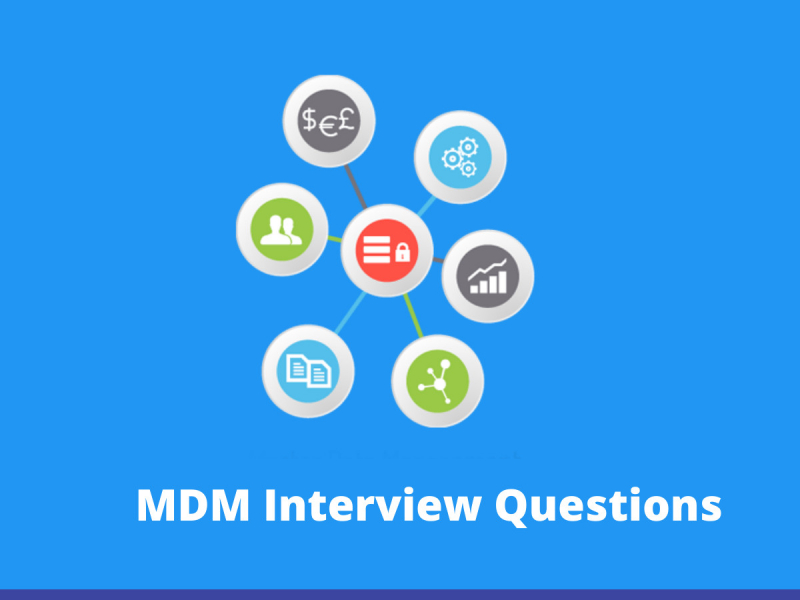Before we look into MDM interview questions, it is important to have an overview of this challenging field. MDM stands for Master Data Management (MDM). It is the management of some essential data resource of a business group. Although MDM’s main aim is data management, its main characteristic is gripping of higher-level data elements, which includes distinct identity classifications of people, places, concepts, and things.
Way back in 2008, the idea of Master Data Management was coined when Enterprise Resource Planning (ERP) applications and data warehousing became prominent in many business groups. With the advancement, the volumes of data and databases increased which resulted in the addition of more fraction of applications for users to process and view the data. Hence, it was necessary to ensure that the right master data definitions were used so that there are distinct data with no variation, duplications or obsolete date.
Let us take the example of Customer Information. In a large enterprise, there is a probability of multiple databases of the customer which are controlled by multiple applications. So, one customer can receive emails or messages from the same enterprise. As the information grows, the master data is bound to include other important data assets like the data of suppliers, products and panelists. If master data is not properly coordinated and synchronized across the enterprise, then the prospect of MDM seems challenging. But with challenges only comes great opportunities. So, if you’re passionate to work in this field, here are some of the top MDM interview questions that will guide you through your process.

